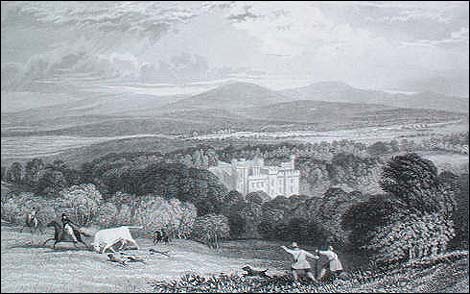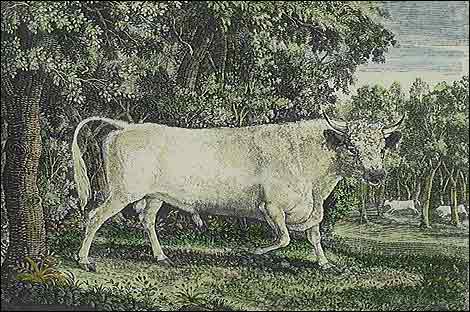
Nice overview of the cattle- history and genetics found at the BBC web site.
The cattle, who live in northern Northumberland, have been inbred for 700 years; in the 13th century the park around Chillingham Castle was enclosed to protect the cattle from the Border Reiver rustlers. These are wild cattle that have never been herded or driven, and have the status of wild animals. They are also genetically linked to the prehistoric Aurochs, extinct for 2500 years. And because of their long inbreeding, Chillingham cattle are all clones:
In recent years DNA samples have been prepared from hair roots collected from dead animals and this work, at the Roslin Institute and Edinburgh University, has revealed that the Wild Cattle are a natural clone.
Not only are all the cattle genetically identical, each animal has also received identical genes from its sire as from its dam (the Y chromosome, which determines masculinity, is not possessed by female mammals, but again the likelihood is that all Y chromosomes in the Chillingham herd are identical).
“Nowhere in the world are there any mammals more inbred than these – yet they continue to survive and thrive.” – The Chillingham Wild Cattle Association
This is unique among animals, and arises from their very long history of inbreeding, together with occasional periods of very low numbers (genetic bottlenecks).
In spite of this genetic identity, it would be difficult to point out two animals that could be said to be identical.
This is because the visible characteristics of any animal (the phenotype) are partly determined by the environment and minor differences between individuals in patterns of development in the womb and afterwards can be expected.
Nowhere in the world are there any mammals more inbred than these – yet they continue to survive and thrive.
